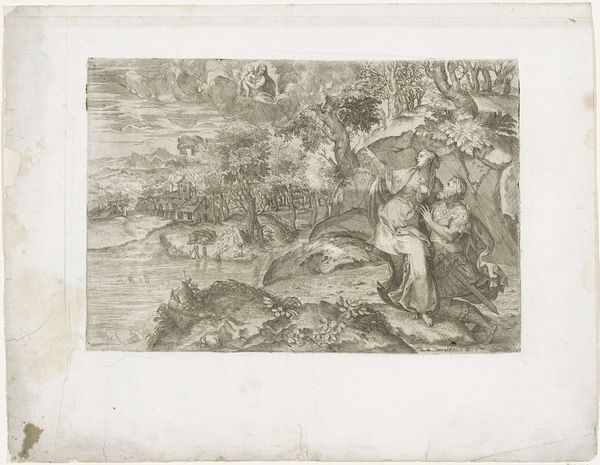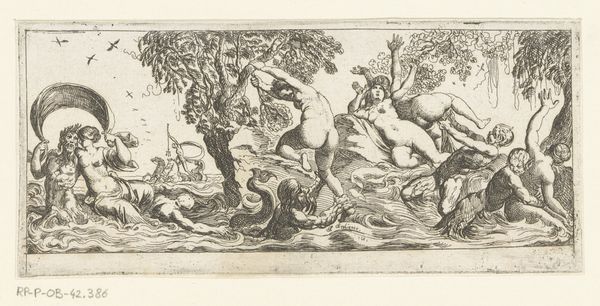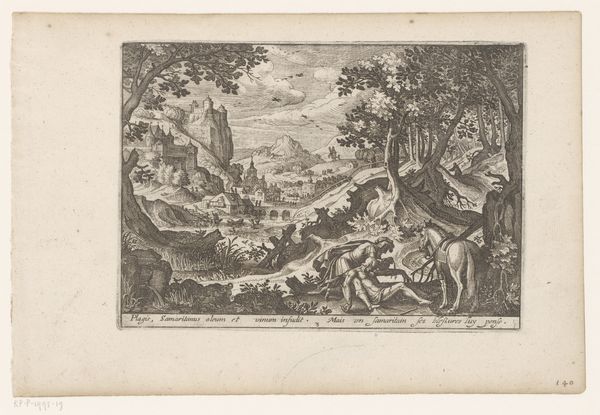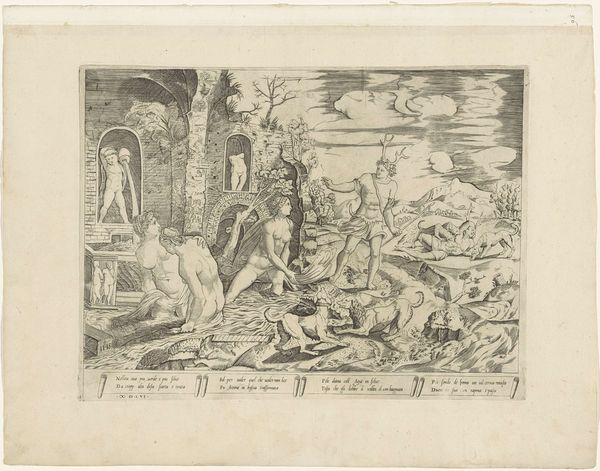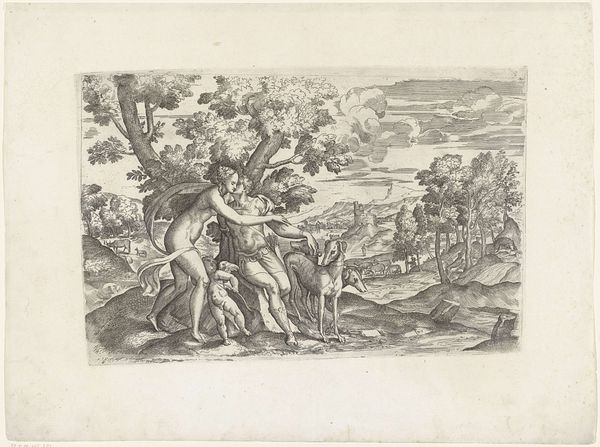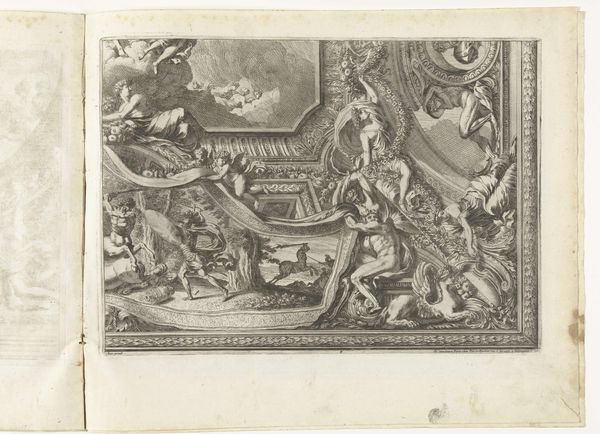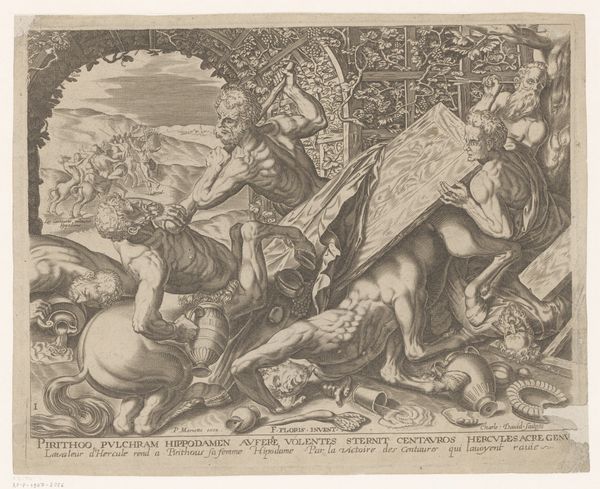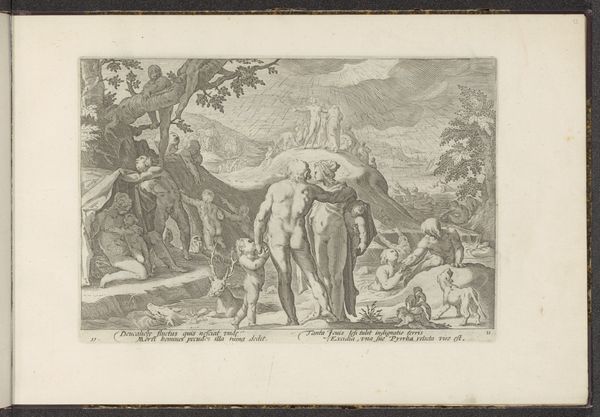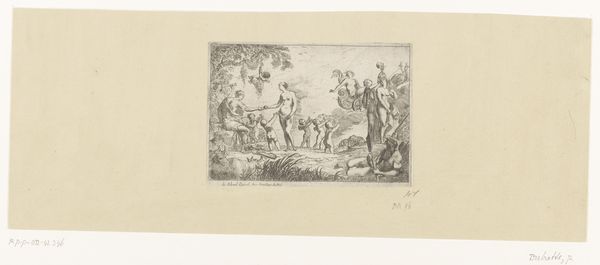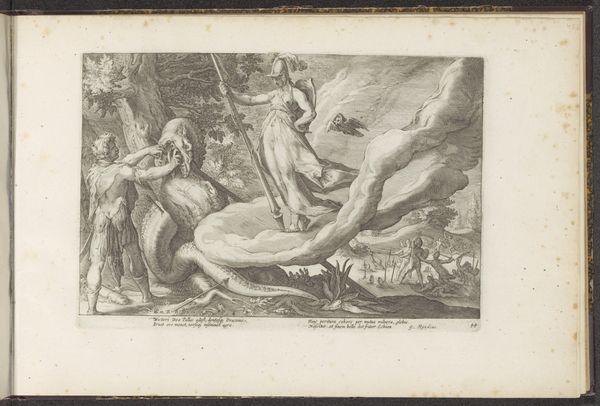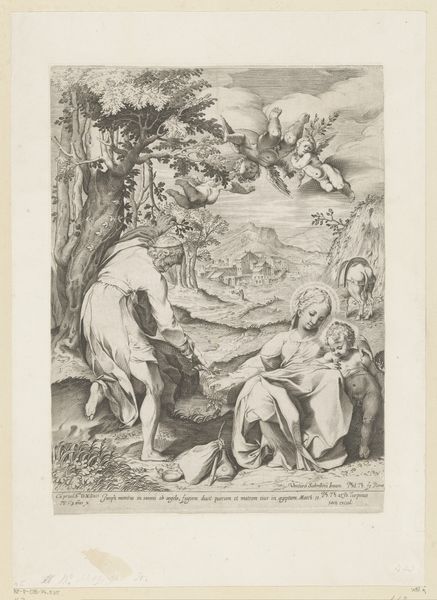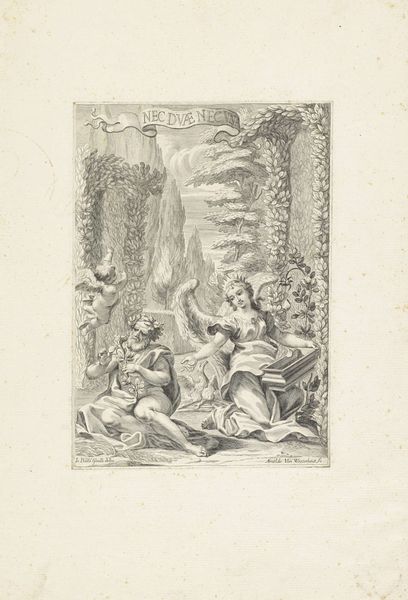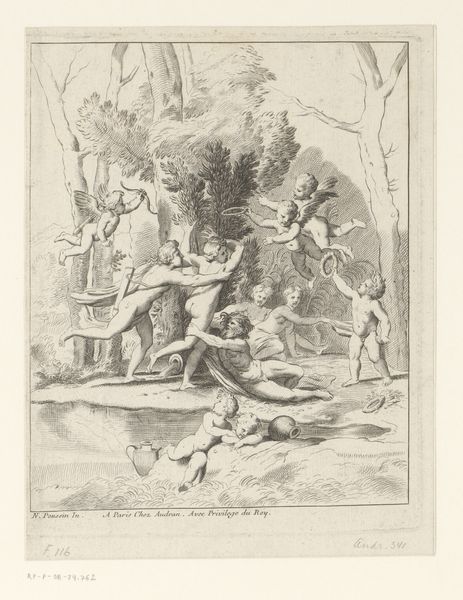
print, intaglio, engraving
#
allegory
# print
#
intaglio
#
classical-realism
#
mannerism
#
figuration
#
form
#
11_renaissance
#
line
#
history-painting
#
engraving
Dimensions: height 182 mm, width 244 mm
Copyright: Rijks Museum: Open Domain
This engraving, "Minerva en Mercurius bewapenen Perseus," was made in Italy by Battista Angolo del Moro sometime in the 16th century. The image depicts a scene from classical mythology in which the gods Minerva and Mercury arm Perseus, who is about to go on a quest to slay Medusa. The image’s visual codes are steeped in the revival of classical learning that characterized the Renaissance. The heroic nude figure of Perseus takes its cue from ancient statuary. The scene’s setting is an idealized landscape, drawing inspiration from the classical world. Italy at this time was home to powerful families, some of whom, like the Medici, were important patrons of the arts. Art became a way of displaying wealth, power, and social status. Classical imagery was fashionable as a way of associating oneself with the glory of the ancient world. To understand this image better, we can turn to the work of art historians, who have traced the history of mythological imagery in Renaissance Italy. This artwork reflects the values of its time, yet how we respond to it remains open to interpretation.
Comments
No comments
Be the first to comment and join the conversation on the ultimate creative platform.
